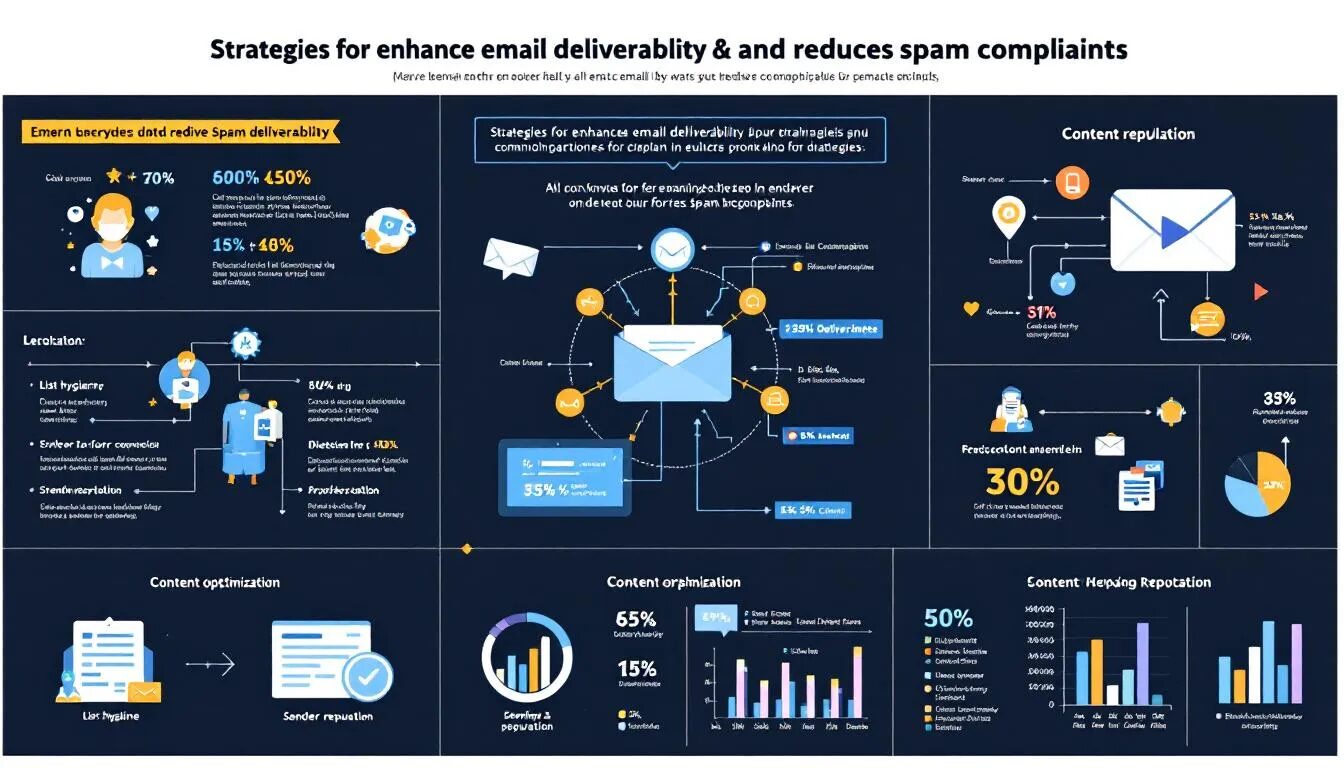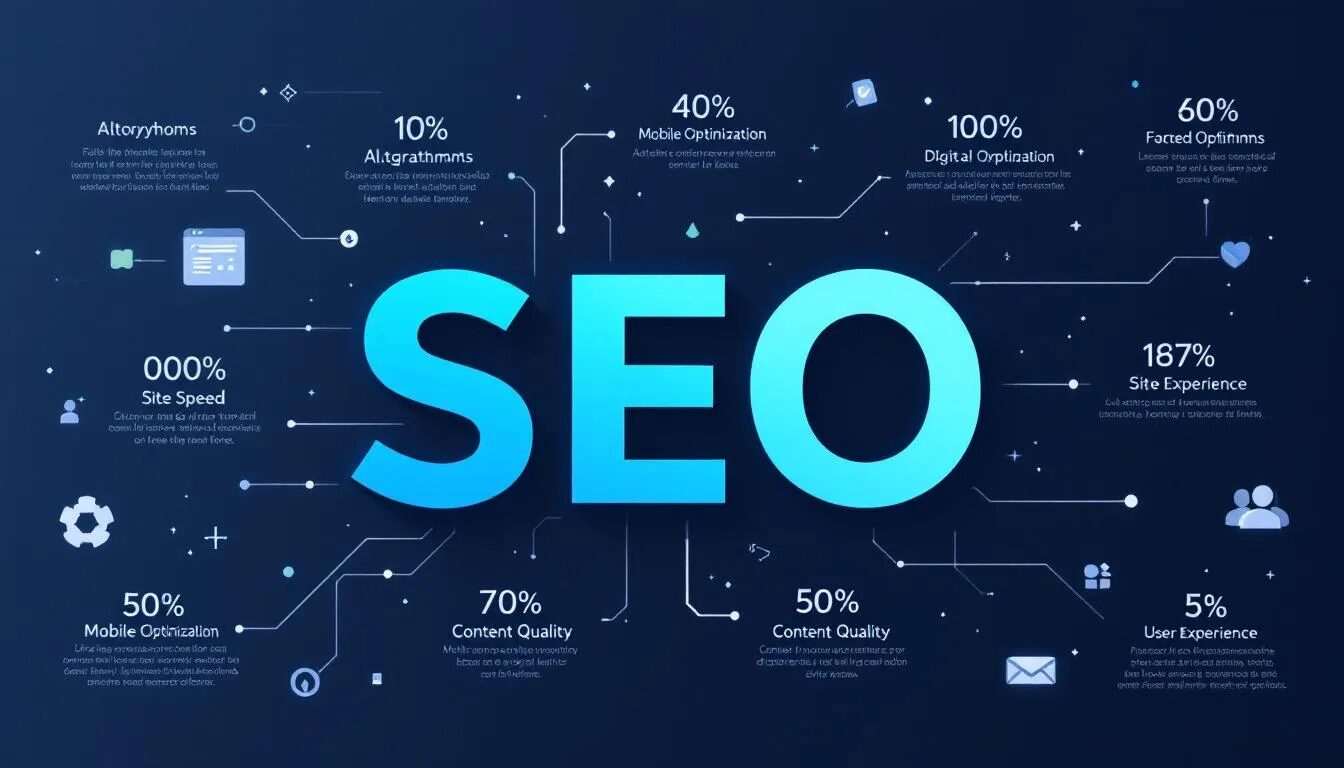
SEO Engine Optimization: The Ultimate Guide to Boost Your Ranking
Wondering how SEO engine optimization can help your website rank higher on search engines like Google? SEO involves improving various elements of your site to attract more visitors and boost conversions. This guide will walk you through technical, on-page, and off-page optimization strategies, plus tips on maintaining long-term results.
Key Takeaways
- SEO is a continuous process aimed at improving website visibility through technical, on-page, and off-page optimization to attract potential customers.
- Creating high-quality, user-centric content and optimizing for mobile devices are essential for enhancing user experience and search rankings.
- Effective SEO performance measurement requires tracking key metrics like organic traffic and bounce rate, along with leveraging tools for data-driven decision-making.
Introduction to Digital Marketing
Digital marketing has become an essential part of any successful business strategy, enabling organizations to connect with their target audience through a variety of online channels. At its core, digital marketing leverages platforms such as search engines, social media sites, email, and other websites to promote products, services, and brand messages. This approach allows businesses to reach customers where they spend much of their time—online.
A key pillar of digital marketing is search engine optimization (SEO). By focusing on engine optimization techniques, businesses can improve the visibility of their web pages in search engine results, making it easier for potential customers to discover their offerings. SEO engine optimization involves optimizing content, structure, and technical elements of a website to ensure it ranks higher in search engine results, driving more organic traffic and increasing brand awareness.
In addition to SEO, digital marketing encompasses a range of tactics, including content marketing, social media engagement, and partnerships with other websites. Together, these strategies form a comprehensive approach to building a strong online presence and achieving organizational objectives in today’s competitive digital landscape.
What is SEO Engine Optimization?
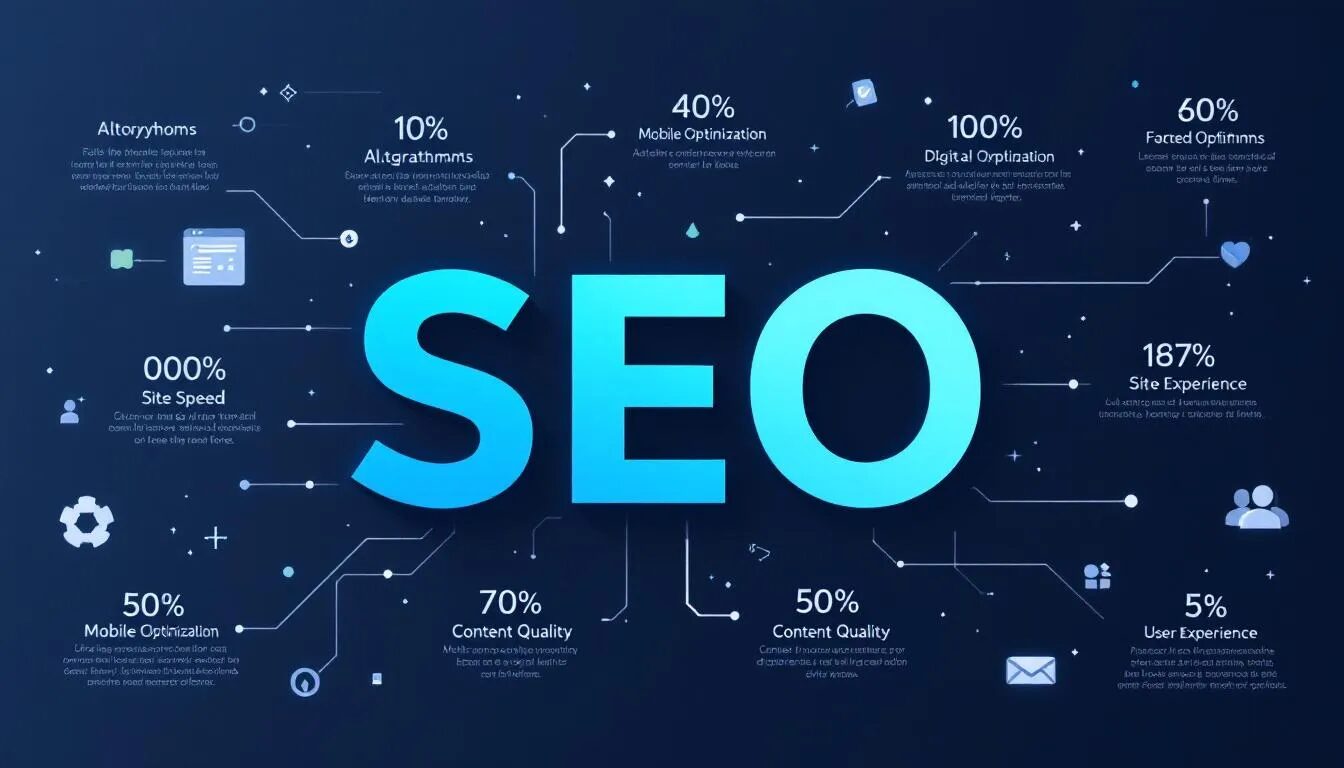
Search engine optimization, or SEO, is a method used to enhance a website’s content so it can rank effectively on conventional search engines. At its core, SEO is a process aimed at improving a website’s visibility in search engines, thereby increasing the likelihood of attracting potential customers. Understanding and implementing SEO fundamentals allows businesses to leverage this powerful tool to drive traffic and generate quality leads. SEO engine optimization is also a core component of a comprehensive marketing strategy, helping businesses achieve their digital marketing objectives.
The benefits of effective SEO are manifold. It helps in gaining visibility and attracting potential customers, ultimately driving traffic and enhancing brand awareness. Optimizing for each ranking factor used by search engines, such as those influenced by algorithms like RankBrain, is essential for improving visibility and driving results. Modern SEO goes beyond traditional keyword density and now also considers user context and intent, making it a more holistic approach.
However, it is important to remember that SEO is an ongoing process that requires regular updates to keep up with algorithm changes and ensure sustained results.
The Key Components of SEO Engine Optimization
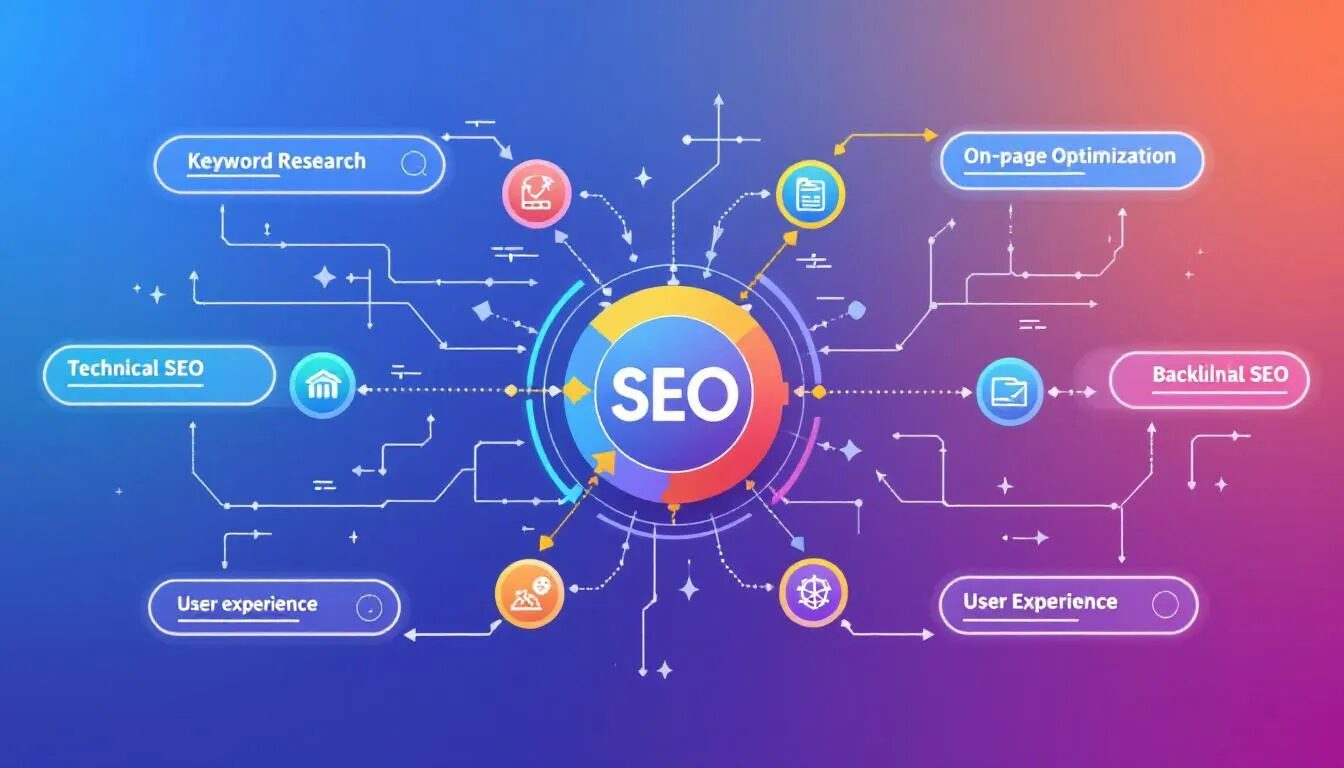
Effective search engine optimization comprises three core components: Technical Optimization, On-Page Optimization, and Off-Page Optimization. Each of these components plays a crucial role in ensuring that a website is both user-friendly and search engine-friendly, ultimately driving organic search traffic and improving search engine results.
Technical Optimization focuses on the behind-the-scenes aspects of a website, ensuring that search engines can easily crawl and index its content. The three components of SEO optimization are:
- Technical Optimization: Ensures search engines can easily crawl and index website content. Managing multiple URLs for the same content is important; using canonical tags or 301 redirects helps consolidate link equity and prevent duplicate content issues.
- On-Page Optimization: Involves tweaking individual web pages to make them more relevant to search queries. Search engines evaluate the relevance and quality of a given page when determining its ranking in search results.
- Off-Page Optimization: Deals with external factors like backlinks and social media engagement.
These three components collectively form the backbone of a robust SEO strategy.
Technical Optimization
Technical optimization is the foundation of search engine optimization (SEO), focusing on enhancing a website’s architecture and performance. Submitting a sitemap, for example, helps search engines discover and index a site’s pages, ensuring better visibility. Ensuring that landing pages are properly linked and accessible is crucial for both organic SEO and paid campaigns, as this maximizes their effectiveness in driving conversions. Effective internal linking can also enhance a webpage’s search visibility by guiding web crawlers through the site.
Moreover, webmasters can control search engine access using specific meta tags and files, ensuring that only the most relevant content is indexed. Slow page load speeds can deter visitors, making it crucial to optimize technical elements for faster loading times.
Given that many businesses overlook the need for mobile optimization, it’s essential to remember that Google ranks sites based on their mobile versions.
On-Page Optimization
On-page optimization involves optimizing individual web pages through content adjustments, HTML tags, and keyword integration to improve search rankings. This component of search engine optimization ensures that the content on a webpage is relevant to the search queries it aims to rank for. Utilizing relevant keywords within the content can significantly increase a webpage’s relevance to search queries and drive more organic search traffic.
Optimizing each blog post with relevant keywords and internal links helps search engines discover and index new content efficiently.
Additionally, on-page optimization focuses on providing a great user experience. This includes making sure that the content is easily readable, the website is navigable, and that the user can find what they are looking for without hassle. Such efforts not only improve search engine results but also enhance visitor satisfaction, reducing bounce rates and increasing the likelihood of conversions.
Off-Page Optimization
Off-page optimization refers to activities conducted outside of your own website to improve its search engine rankings. This primarily involves acquiring high-quality backlinks from other reputable websites. High authority websites often dominate search results, making it essential to establish credibility through quality content and external links. Off-page optimization can also involve exchanging offerings of value with other reputable sites to build authority and trust.
The importance of brand loyalty in off-page optimization cannot be overstated. Rather than focusing solely on the quantity of backlinks, search engines now prioritize the quality and context of these links. Engaging in social media sites interactions and forum posts can also enhance your site’s authority, driving more organic traffic and improving brand recognition in search engine results.
How Search Engines Work

Understanding how search engines work is crucial for effective search engine optimization. The process involves three main steps:
- Crawling: The initial stage where web crawlers, also known as spiders, explore the internet to discover available content.
- Indexing: (not detailed in the input but implied as the second step).
- Ranking: (not detailed in the input but implied as the third step).
Leading major search engines use these crawlers to find new pages and other pages to update their databases. When a new blog post is published and linked from the homepage, search engines can quickly discover and index it.
Once the content is discovered, it undergoes indexing, which involves:
- Processing and storing the content in the search engine’s database.
- Evaluating the content’s value.
- Determining whether the content should be included in the index.
Content linked in marketing emails can also be discovered and indexed by search engines if the emails are publicly accessible.
Finally, the ranking process generates search results based on user queries, guided by complex algorithms like Google’s Hummingbird, Panda, and RankBrain.
Effective Keyword Research Strategies
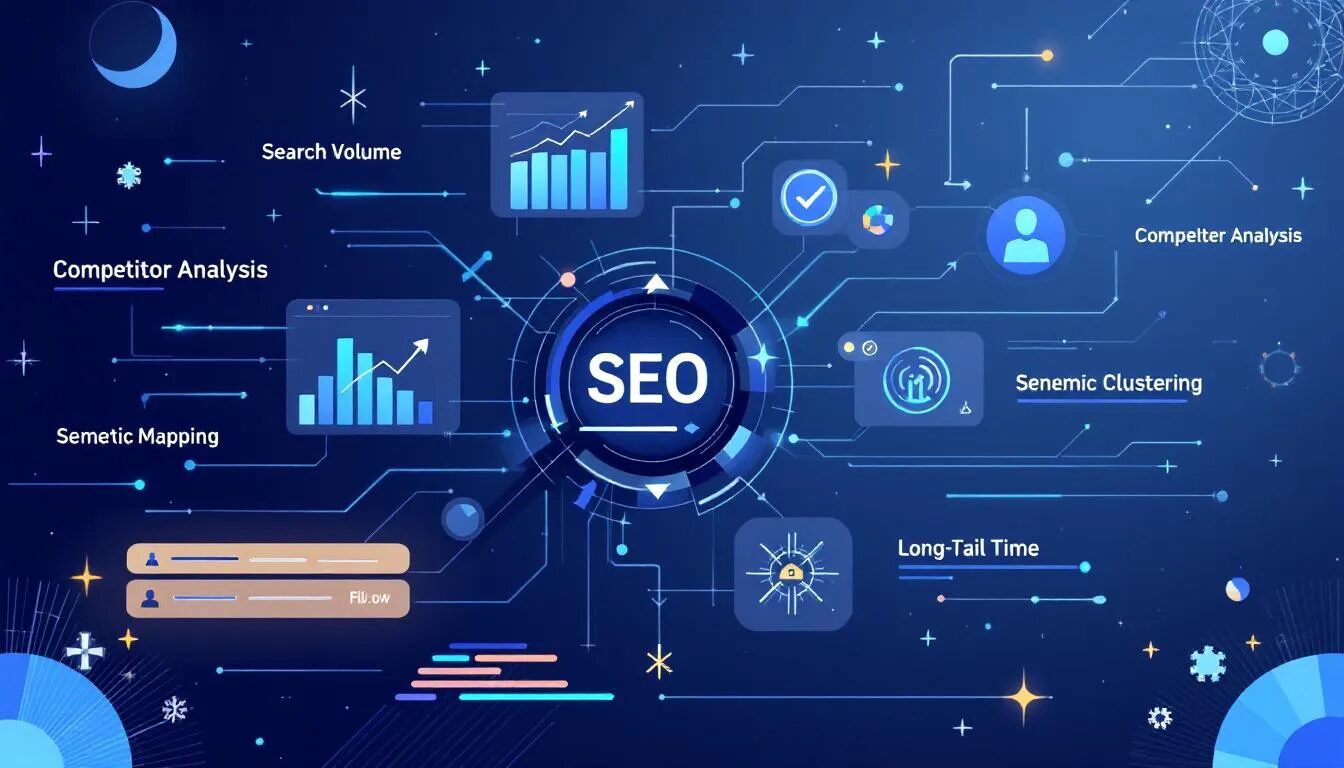
Keyword research is a cornerstone of search engine optimization, involving:
- Finding and analyzing key terms to guide content creation and SEO efforts.
- Understanding user intent, which is crucial as it influences how well content will rank in search engines.
- Using tools like Google Keyword Planner to refine keyword lists and provide valuable search volume data, making it easier to prioritize which keywords to target.
Monthly search volume (MSV) indicates how often a keyword is searched, helping to balance short-term and long-term SEO strategies. A marketing mix of head terms and long-tail keywords is beneficial, as head terms target a broader audience while long-tail keywords focus on more specific queries. Researching related search terms can also uncover additional keywords that may be valuable for content creation.
Incorporating these strategies ensures that your SEO efforts are aligned with what users are actually searching for, increasing the likelihood of driving organic search traffic to your site. Effective keyword research not only improves search engine rankings but also enhances the overall quality and relevance of your content. Additionally, targeting the right keywords can support lead generation by attracting users who are more likely to convert, making it a key objective for many digital marketing strategies.
Creating High-Quality Content for SEO
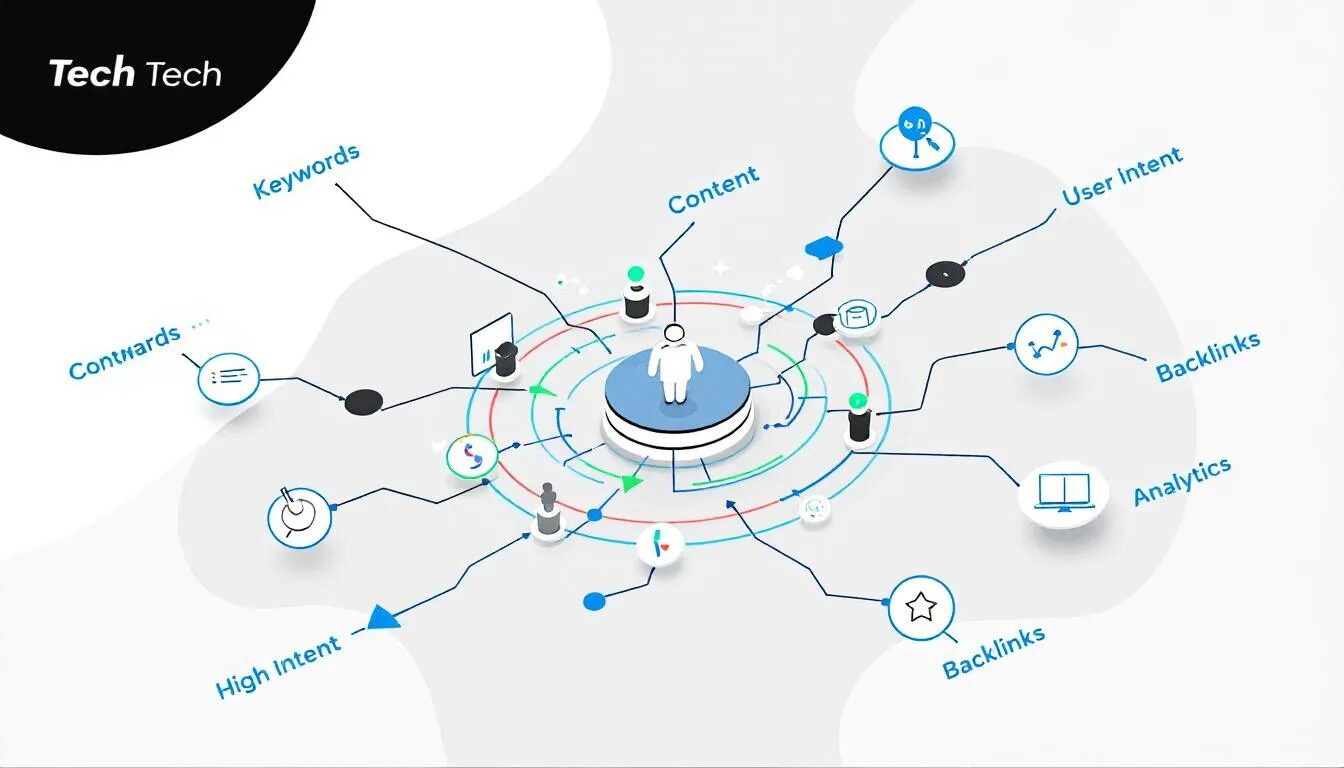
Creating high-quality writing content is pivotal for search engine optimization. Search engines prioritize content that is both engaging and relevant, determining rankings based on these factors. Content should offer unique insights or thorough descriptions to stand out in search results. Ensuring that the content is well-produced and free from errors enhances its credibility.
It’s crucial to avoid creating content solely for search engines, as this can detract from user satisfaction. Demonstrating authority and expertise through clear sourcing can improve the trustworthiness of your content. Engaging content that fulfills user needs encourages visitors to return and share it, further boosting its visibility and effectiveness. Consistently providing valuable content is essential for relationship building, helping to foster long-term audience loyalty.
Focusing on creating valuable content that resonates with your target audience improves search engine rankings and fosters lasting engagement. This approach ensures that your content marketing continues to attract and reach customers, driving sustained organic search traffic to your site through lead nurturing emails, ultimately increasing brand awareness.
Enhancing User Experience for Better Rankings
Enhancing user experience is a critical factor in boosting search engine rankings. Key points about mobile optimization include:
- A well-designed mobile interface can lead to lower bounce rates and higher conversion rates.
- Mobile-responsive design is essential.
- Most web traffic now comes from mobile devices.
- Mobile optimization impacts both user engagement and search rankings.
Optimizing website speed is equally important. Slow loading times can deter visitors and adversely affect user retention, ultimately impacting search engine rankings. Focusing on these aspects helps businesses create a seamless user experience, encouraging longer visits and higher engagement, thereby improving overall SEO performance.
Local SEO Techniques
Local SEO techniques are essential for small business aiming to attract customers in specific geographic areas. Keeping business information accurate and complete in Google My Business increases visibility in local search results. Verifying your business with Google ensures that you are recognized as an authorized representative, enhancing your chances of appearing in search results.
Factors influencing local search rankings include relevance, distance, and prominence of the business. Regularly updating business hours and responding to loyal customers’ reviews demonstrate that you value feedback, which can positively influence local rankings. Adding photos and videos to your business profile also enhances customer relationships and engagement.
Measuring SEO Performance
Measuring SEO performance is crucial for understanding the effectiveness of your strategies. When setting SEO objectives and KPIs, it’s important to be realistic and ambitious based on existing data. Effective tracking allows for adjustments to strategies based on performance data, ensuring continuous improvement.
User engagement metrics like bounce rate and dwell time, along with click through rate, are becoming critical for optimizing SEO. Competitor analysis can also provide valuable insights into which keywords are effective in driving traffic to similar sites. By focusing on these metrics, businesses can make data-driven decisions to enhance their SEO efforts.
For businesses using email marketing, tracking email deliverability and analyzing the performance of each email campaign are essential for optimizing overall digital marketing results.
Key Metrics to Track
Tracking key metrics is essential for measuring the success of SEO efforts. Important metrics include:
- Organic traffic: indicates the number of visitors coming from search engines.
- Bounce rate: reflects the percentage of visitors who leave after viewing only one page.
- Conversion rates: show the percentage of visitors who complete desired actions on the website.
Additionally, monitoring inactive subscribers in your email list is crucial for maintaining high engagement rates and improving overall campaign effectiveness.
These metrics provide insights into user engagement and the effectiveness of SEO strategies, enabling marketers to make data-driven decisions that align with their marketing goals. Focusing on these key metrics allows businesses to continually refine their SEO efforts for better results.
Tools for Monitoring SEO
Various categories of SEO tools help track performance, such as ranking and reporting tools, SEO audit tools, keyword and content research tools, and Page Speed Insights. Various methods include popular basic tools like Google Analytics for performance tracking, SEMrush for competitive analysis, and Ahrefs for backlink tracking. An email marketing platform is also essential for creating, managing, and analyzing email campaigns as part of a comprehensive digital marketing strategy. Many email marketing platforms offer features such as automation, templates, and analytics to streamline campaign management. Businesses should review popular email marketing platforms to select the best fit for their needs.
These best tools are invaluable for monitoring and refining SEO strategies. Leveraging these tools helps businesses gain a comprehensive understanding of their SEO performance, identify areas for improvement, and make data-driven decisions to enhance search engine rankings.
Common SEO Mistakes to Avoid
Avoiding common SEO mistakes is crucial for maintaining high search engine rankings and a positive user experience. One of the most prevalent errors is keyword stuffing, which involves excessively adding keywords to a page, making the content unreadable and user-unfriendly. Neglecting search intent can also be detrimental, as it means failing to create content that aligns with what users are actually looking for, leading to poor ranking.
In email marketing, a poorly crafted subject line can result in low open rates and reduced engagement. Testing different subject line variations is a best practice to improve the effectiveness of email campaigns.
Poor internal linking can reduce site engagement; effective links should accurately represent the destination content. Duplicate content can confuse search engines, potentially leading to neither version being ranked properly. Additionally, a lack of multimedia content can detract from user engagement; incorporating visuals can enhance the overall site experience. The presence of the same content can also impact how users interact with the site.
Avoiding these mistakes is crucial for improving SEO performance and ensuring a better user experience.
Future Trends in SEO Engine Optimization
The future of search engine optimization is being shaped by advancements in technology and changing user behaviors. AI tools are increasingly being utilized to enhance content creation, focusing on augmentation rather than complete automation. These tools optimize:
- Keyword research
- Content generation
- Insights
- User intent information making SEO efforts more efficient and effective.
Viral marketing campaigns, which rely on rapid sharing and word-of-mouth, are expected to play a larger role in digital marketing strategies. Additionally, the use of targeted emails, personalized for specific audience segments, will become increasingly important for driving engagement and conversions.
Search engines will increasingly prioritize matching user intent to improve ranking accuracy. Another emerging trend is the rise of zero-click searches, where users find answers directly on the search results page due to features like AI-generated summaries and structured data.
These trends highlight the need for businesses and other businesses to stay updated with the latest business strategies and digital marketing practices to maintain their competitive edge in the digital landscape.
Summary
In summary, search engine optimization is a multifaceted process that involves technical, on-page, and off-page strategies to improve a website’s visibility and drive organic traffic. Understanding the mechanics of how search engines work, conducting effective keyword research, and creating high-quality content are essential components of a successful SEO strategy. Enhancing user experience and utilizing local SEO techniques can further boost your website’s rankings.
Email marketing remains a powerful tool for audience engagement, lead generation, and brand awareness. Running a well-planned email marketing campaign can help nurture leads and drive conversions. Businesses should leverage email campaigns, including dedicated emails and welcome emails, to engage new subscribers and build lasting relationships.
As the digital landscape continues to evolve, staying abreast of future trends such as AI-enhanced content creation and zero-click searches will be crucial. By avoiding common SEO mistakes and continuously measuring and refining your strategies, you can ensure sustained success in your SEO efforts. Embrace these practices, and watch your website soar to new heights in search engine rankings.
Frequently Asked Questions
What is the primary goal of SEO?
The primary goal of SEO is to enhance a website’s visibility in search engines to drive organic traffic and attract potential customers effectively. By optimizing your site, you can significantly increase your chances of reaching your target audience.
How do search engines work?
Search engines operate by crawling the web for new content, indexing that content in their databases, and using complex algorithms to rank and deliver relevant search results based on user queries. This process ensures that users find the most pertinent information quickly and efficiently.
What are some effective keyword research strategies?
To effectively conduct keyword research, focus on understanding user intent, utilize tools like Google Keyword Planner, and balance head terms with long-tail keywords to enhance your content and SEO strategy. This approach will ensure that you target relevant search queries efficiently.
Why is user experience important for SEO?
User experience is essential for SEO as it directly influences bounce rates, conversion rates, and search engine rankings. A well-optimized site with mobile responsiveness and fast loading times can significantly enhance user engagement and overall performance.
What are some common SEO mistakes to avoid?
To maintain high search engine rankings and enhance user experience, it is crucial to avoid common SEO mistakes such as keyword stuffing, neglecting search intent, poor internal linking, duplicate content, and a lack of multimedia content. Addressing these issues will improve your site’s performance and visibility.
Want More Tips?
Looking for Check out our latest guides and resources to elevate your marketing game
© 2025, Vertical Response. All rights reserved.


